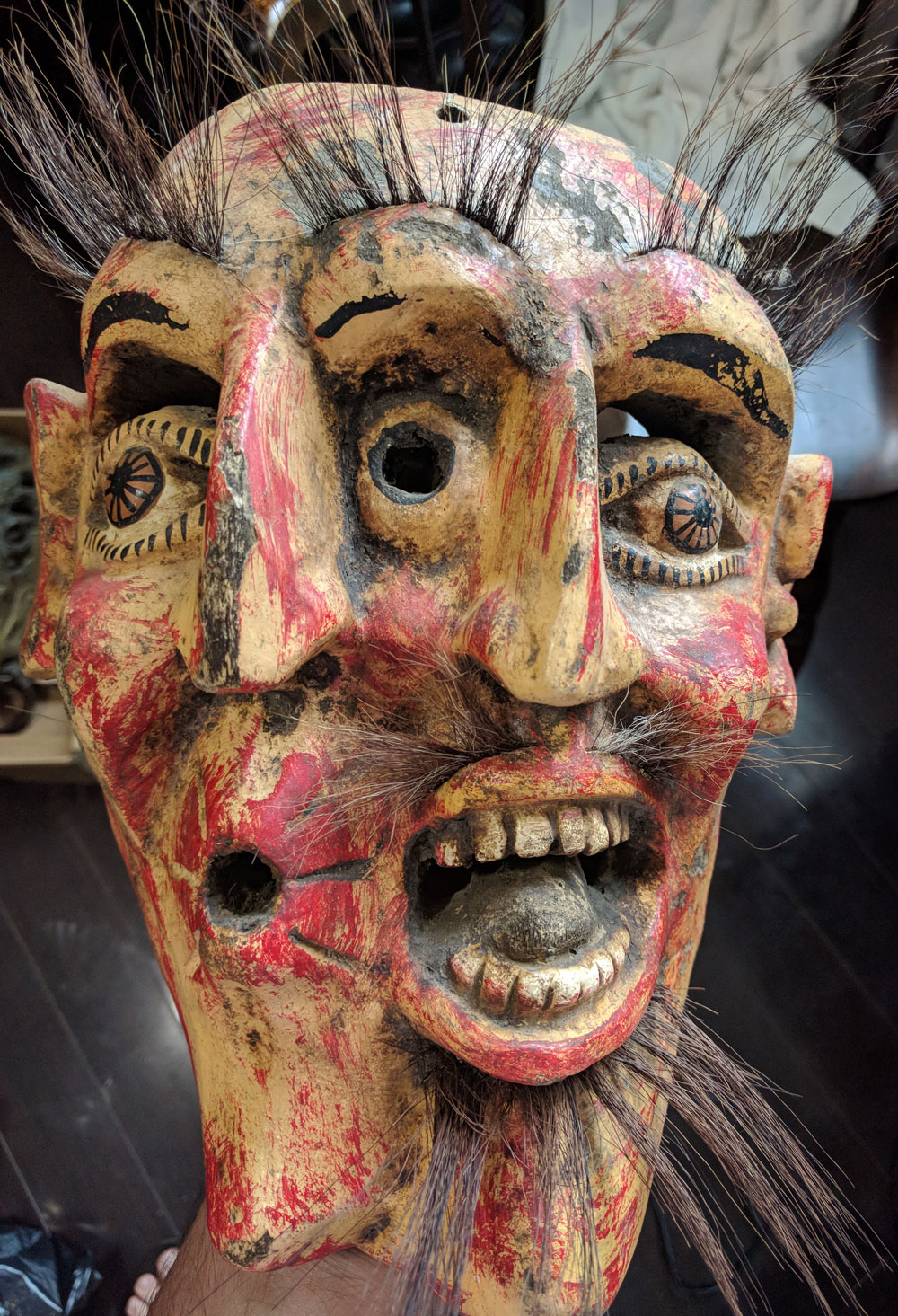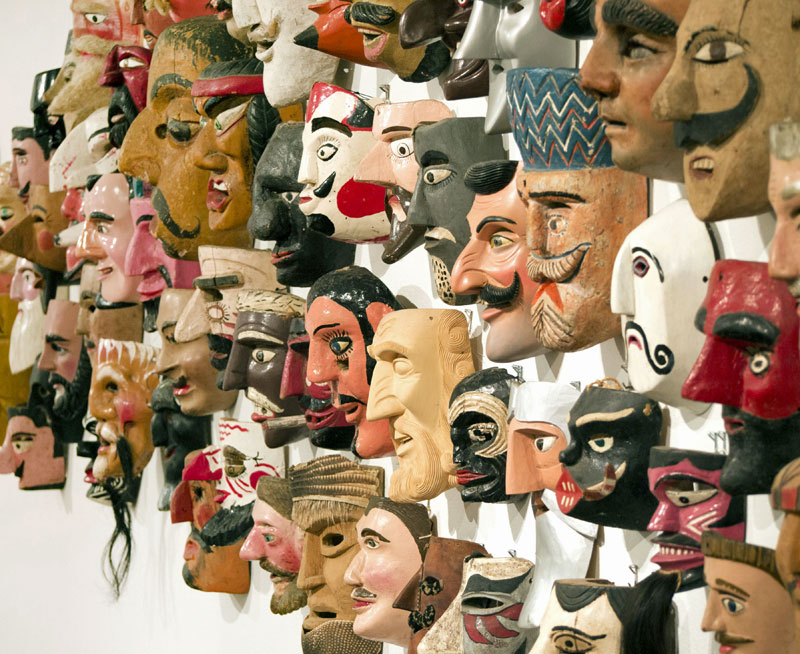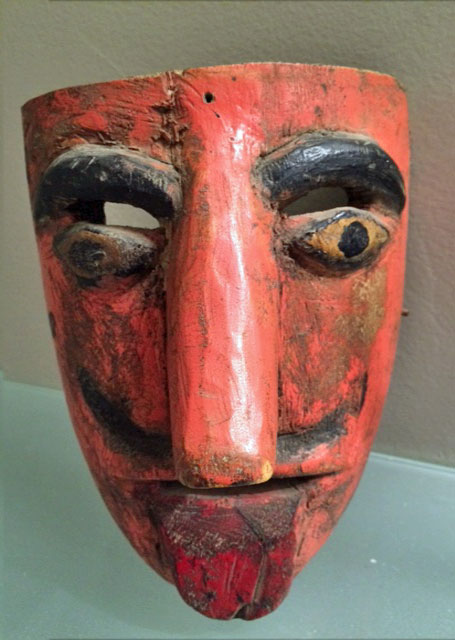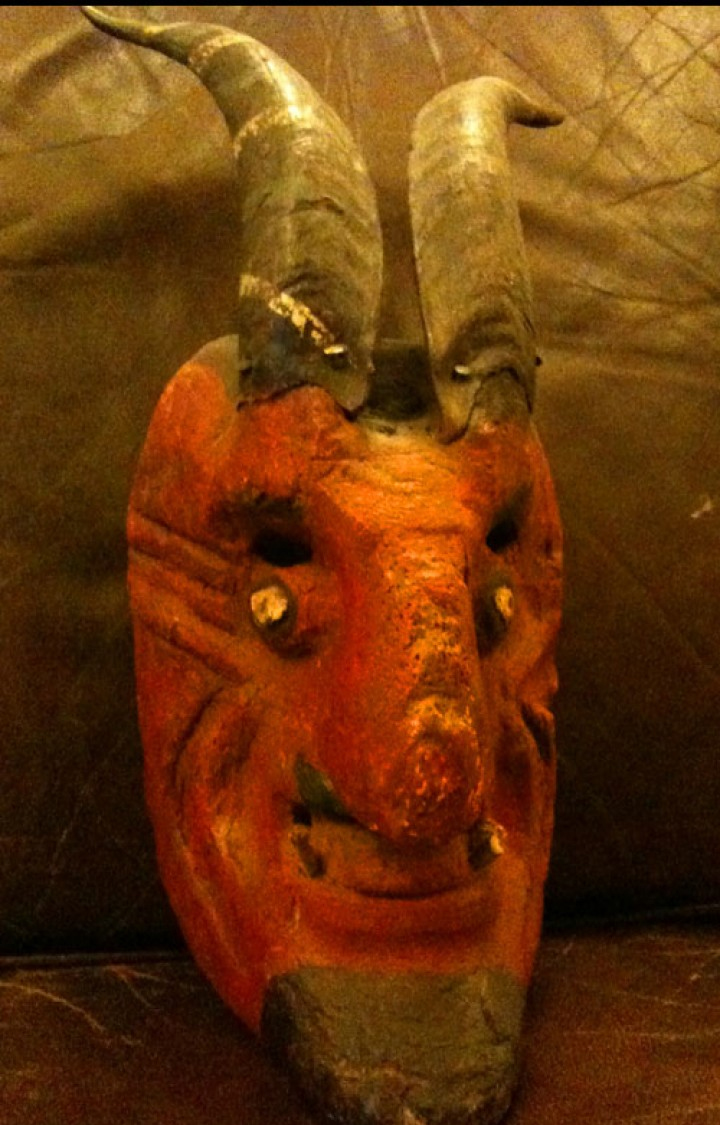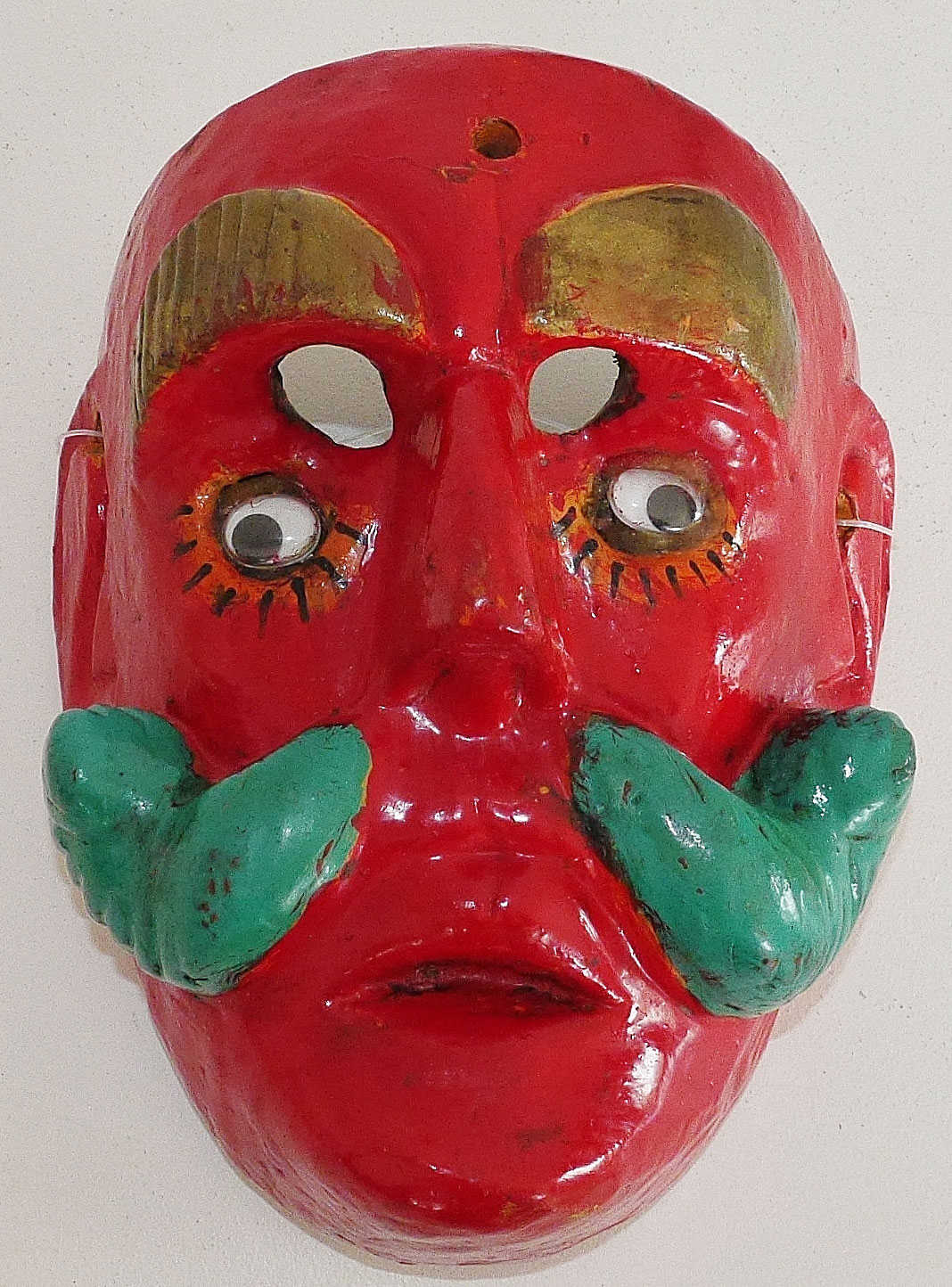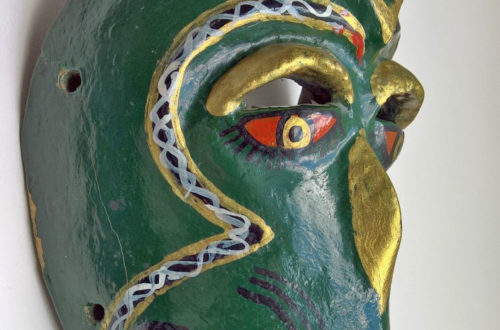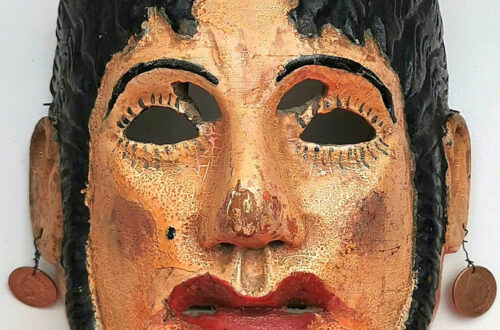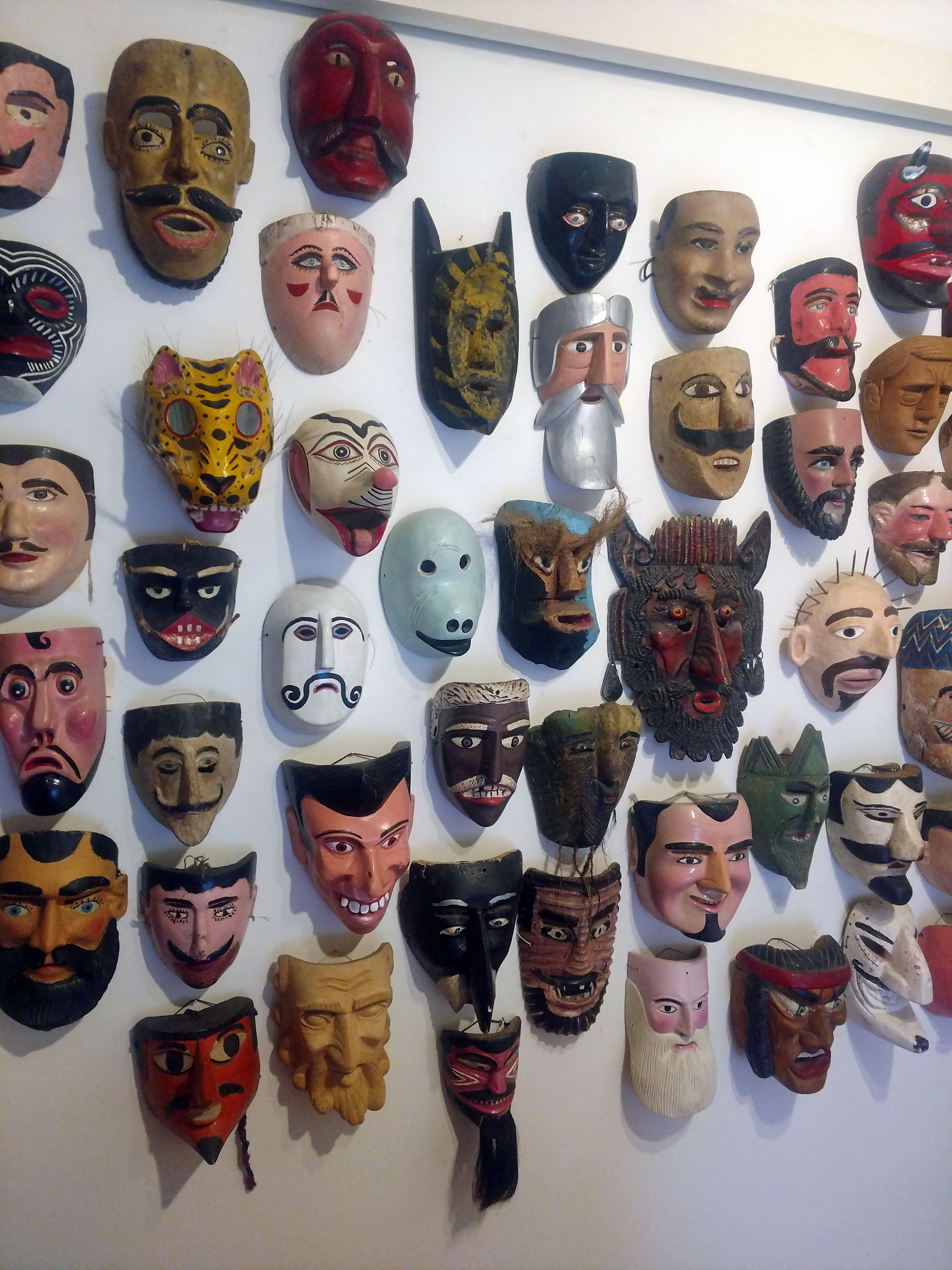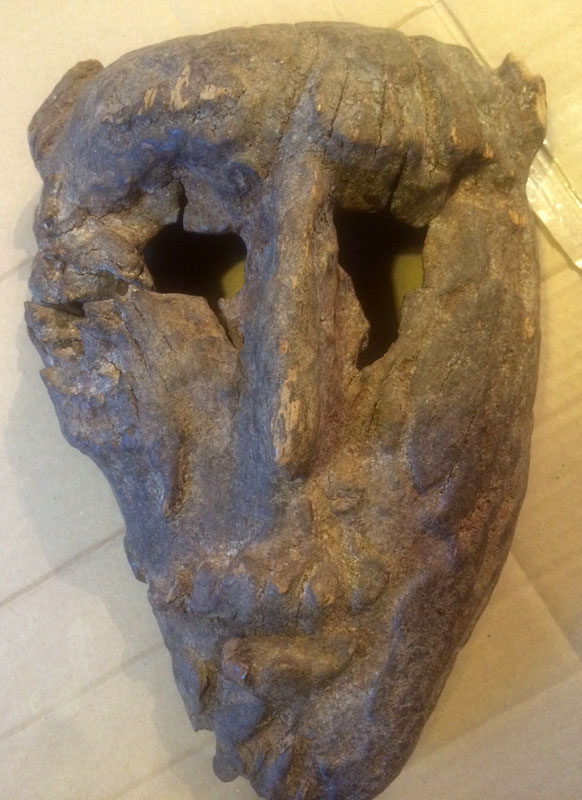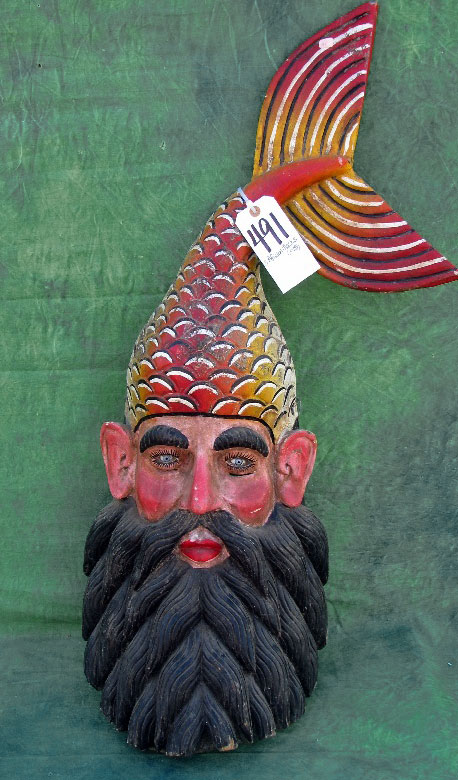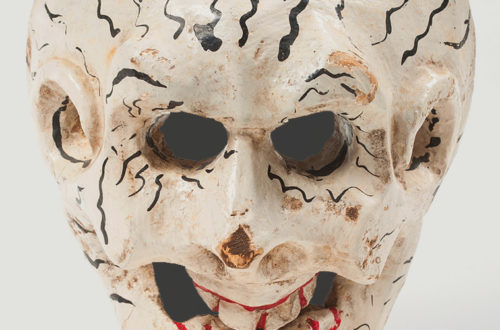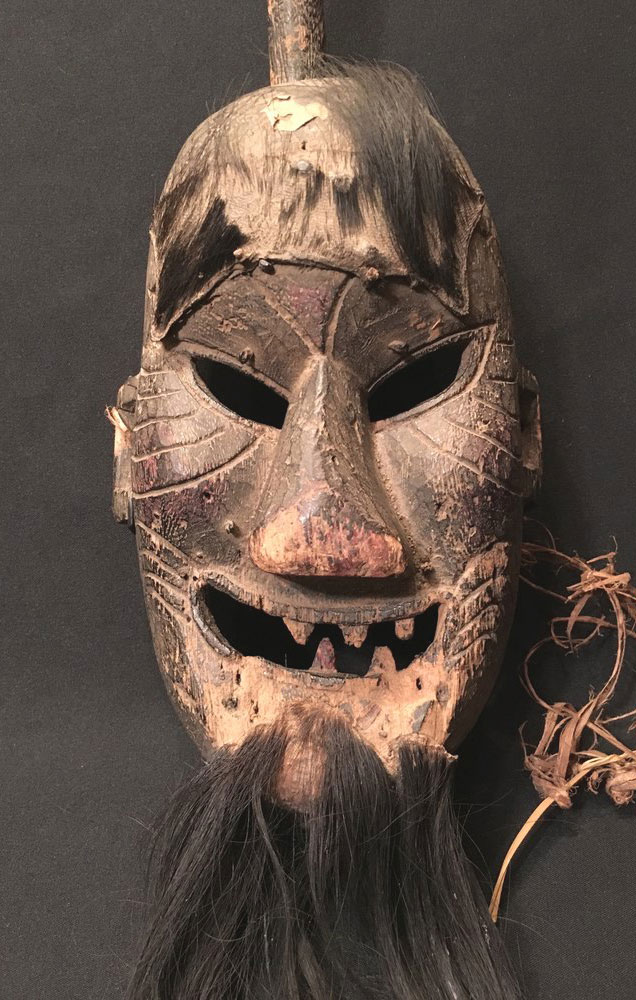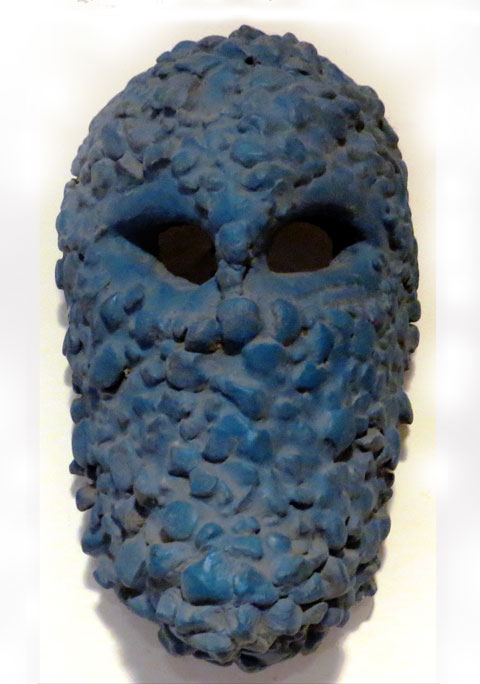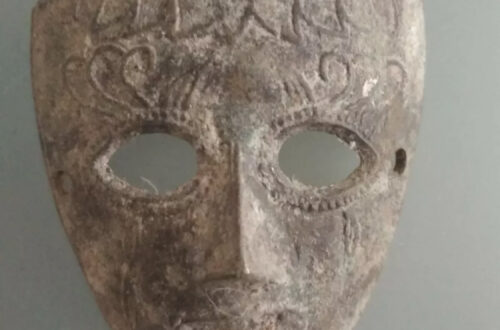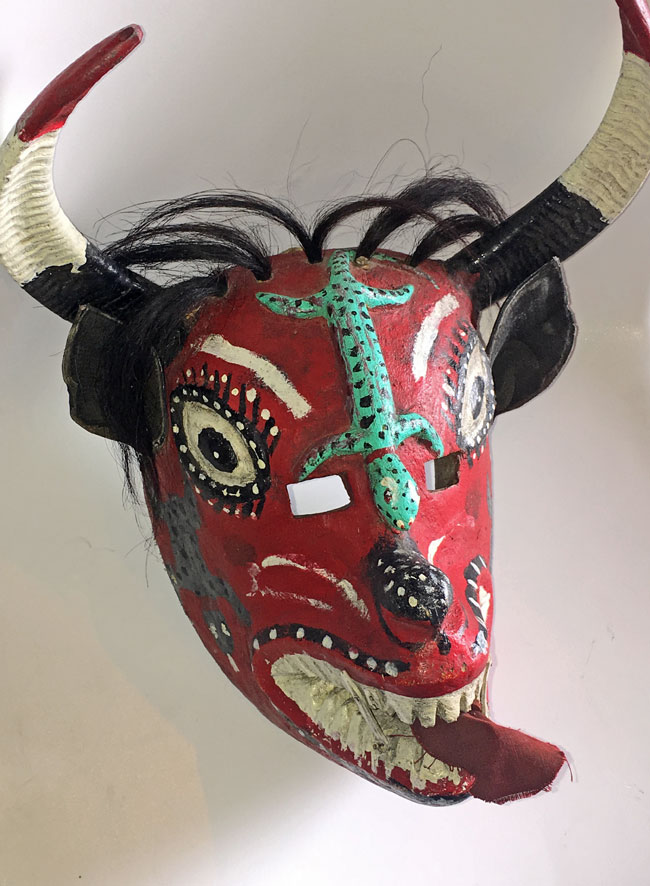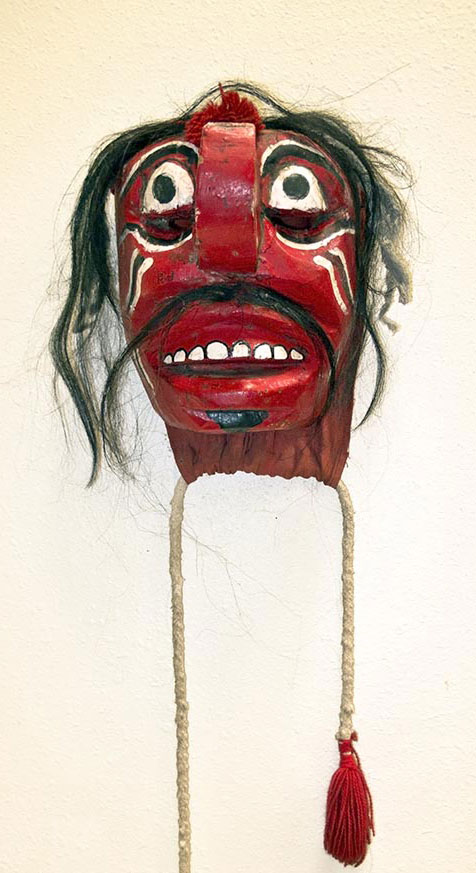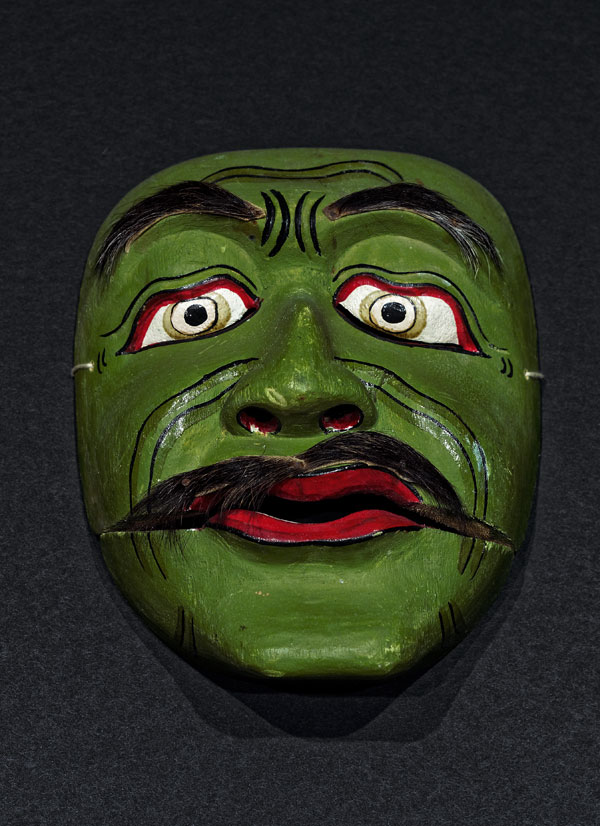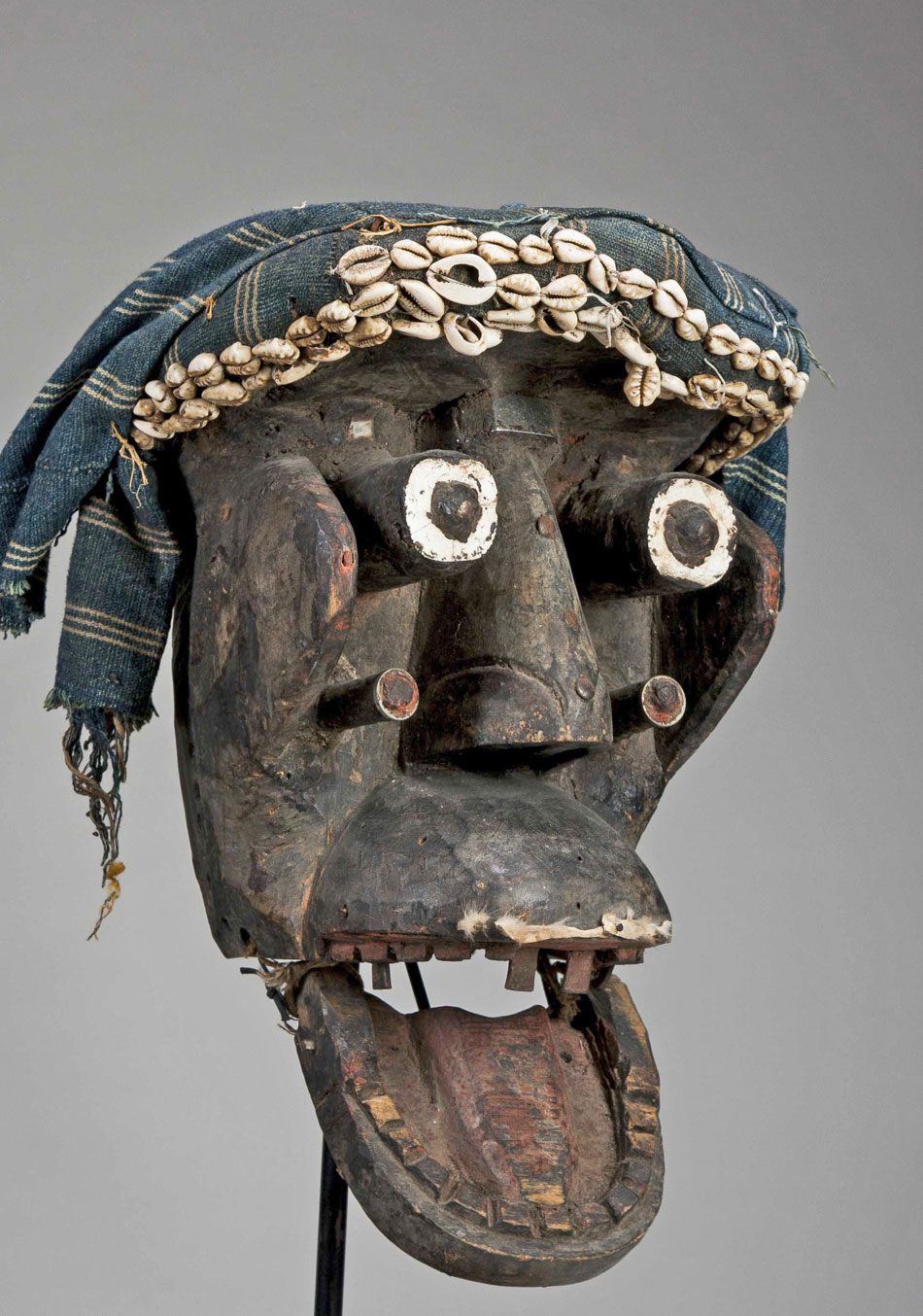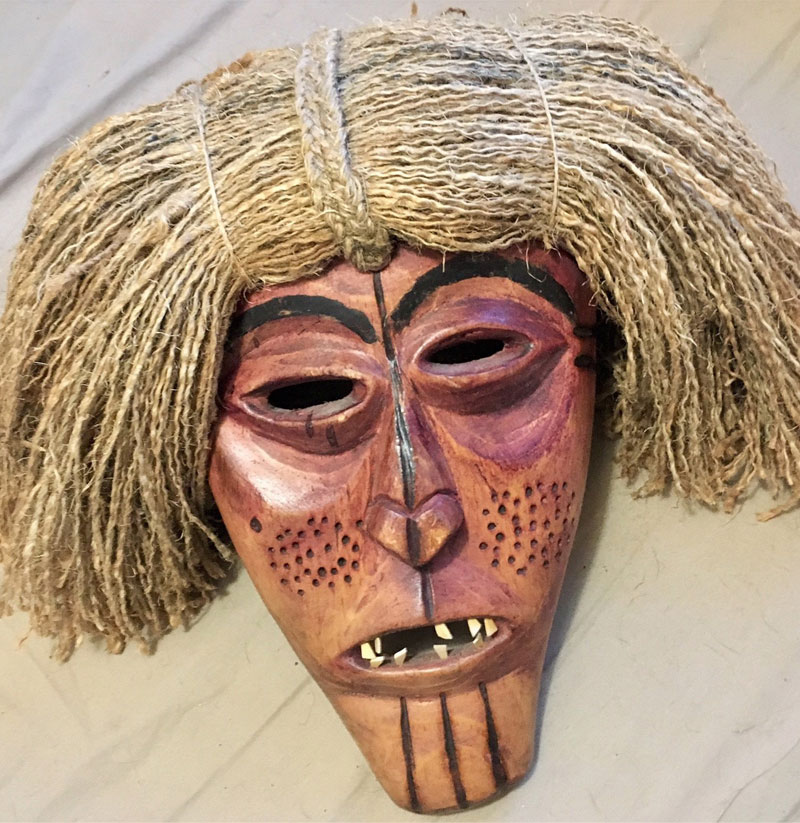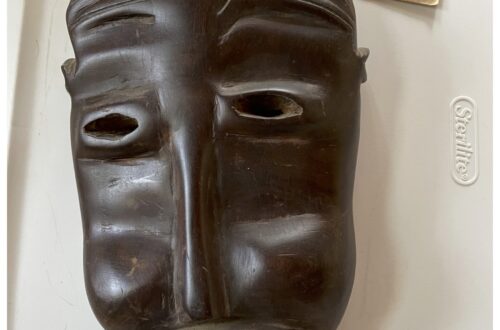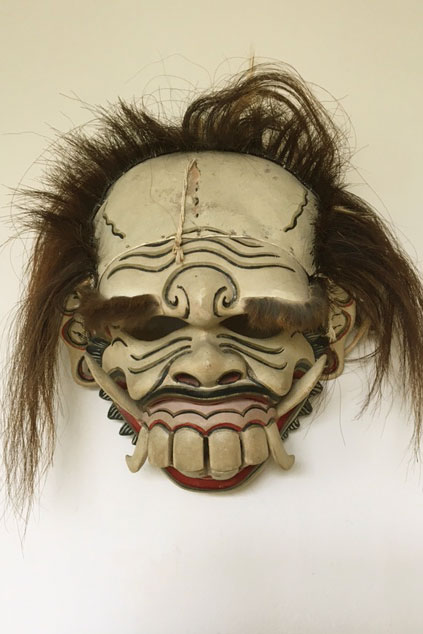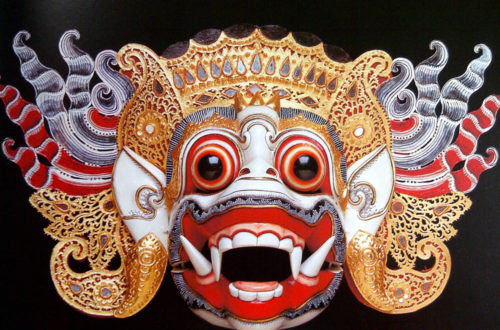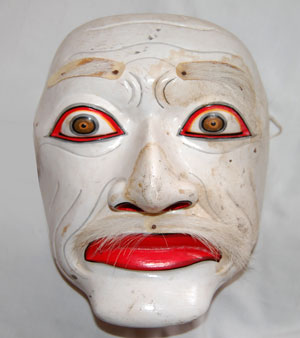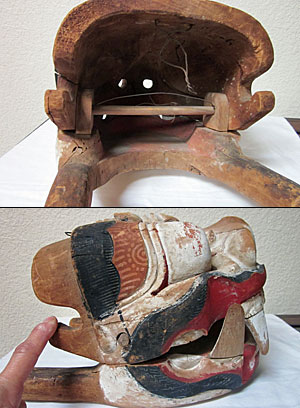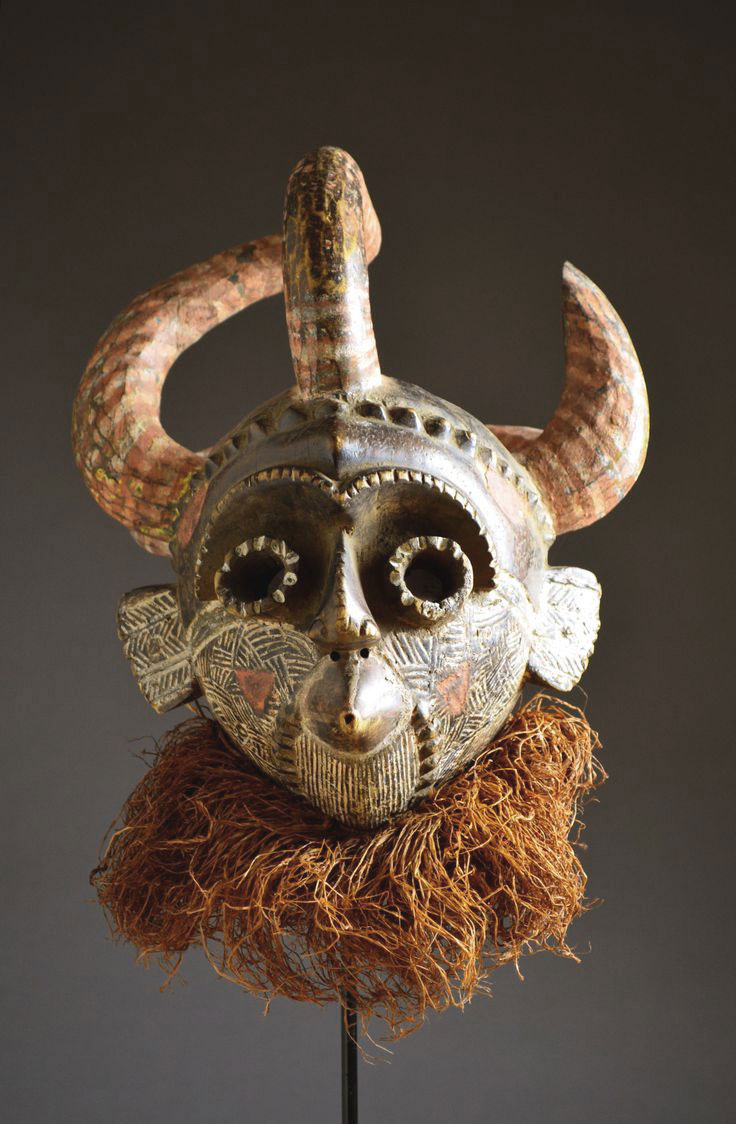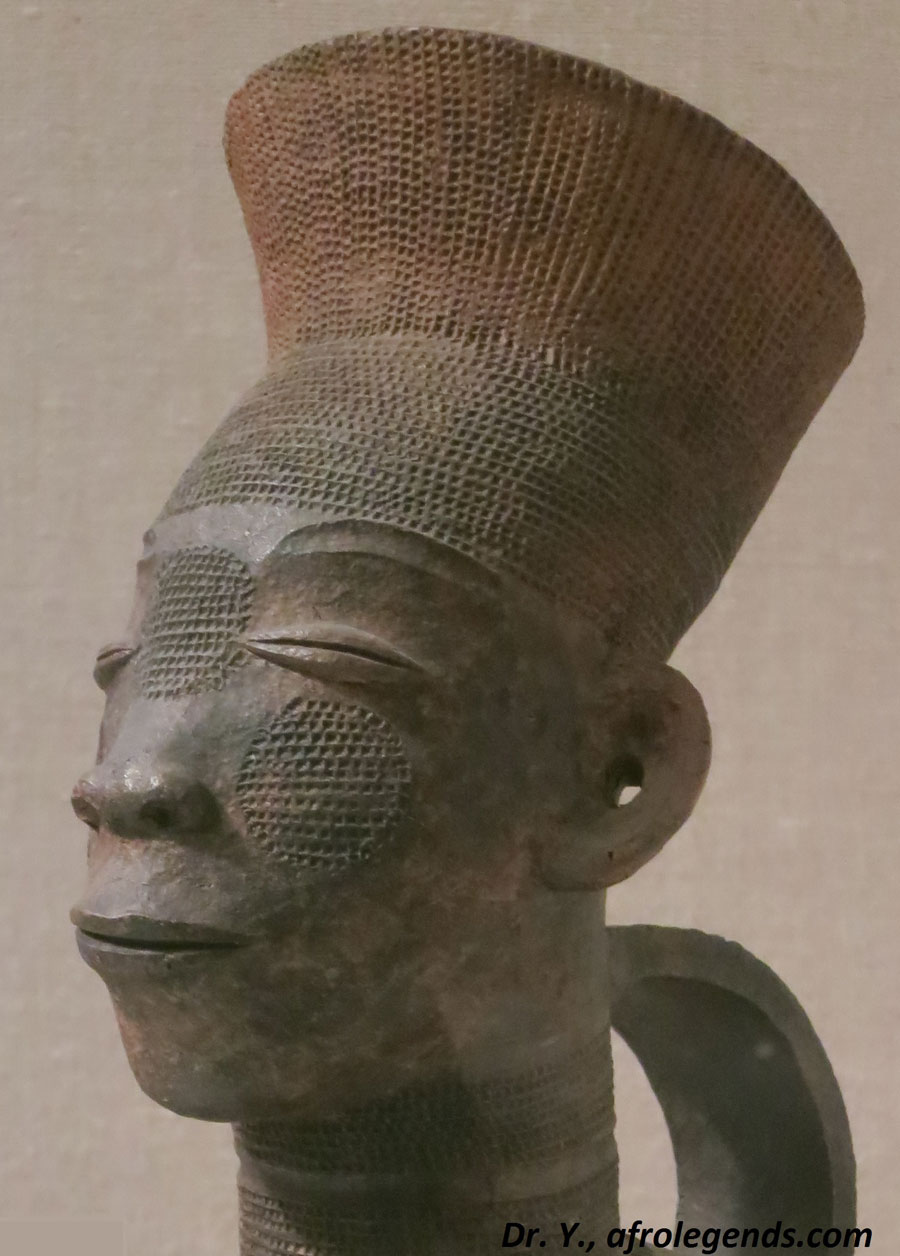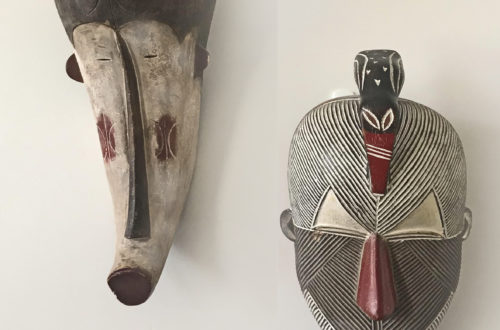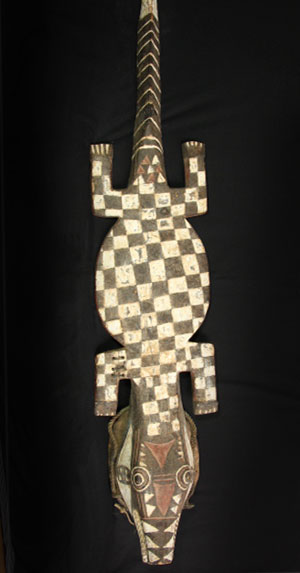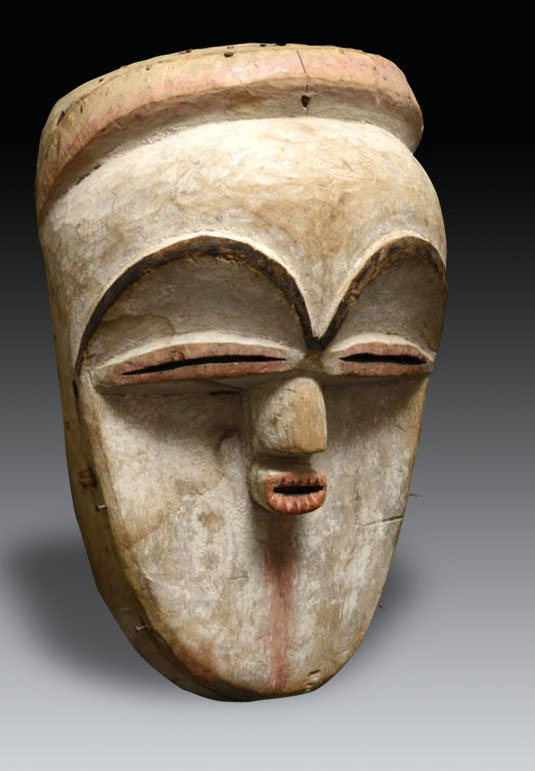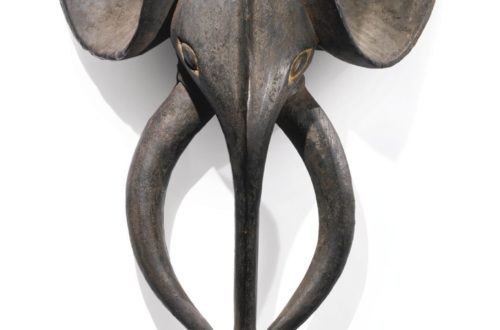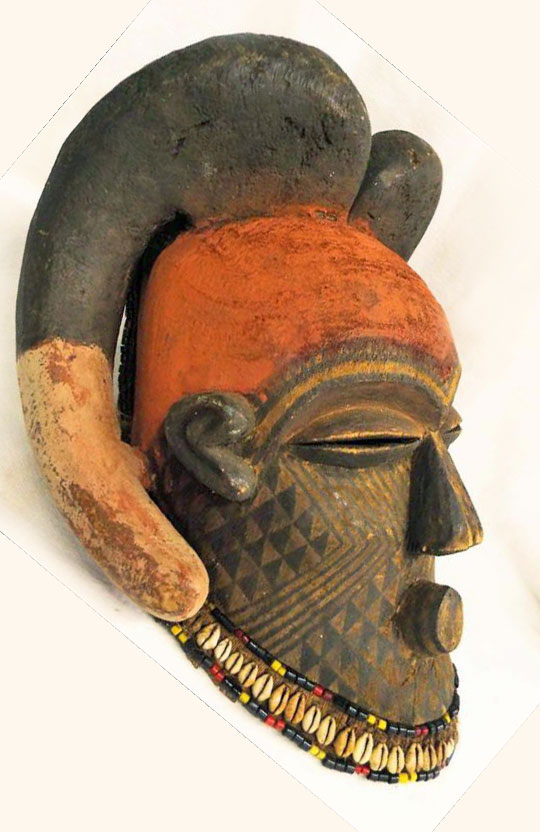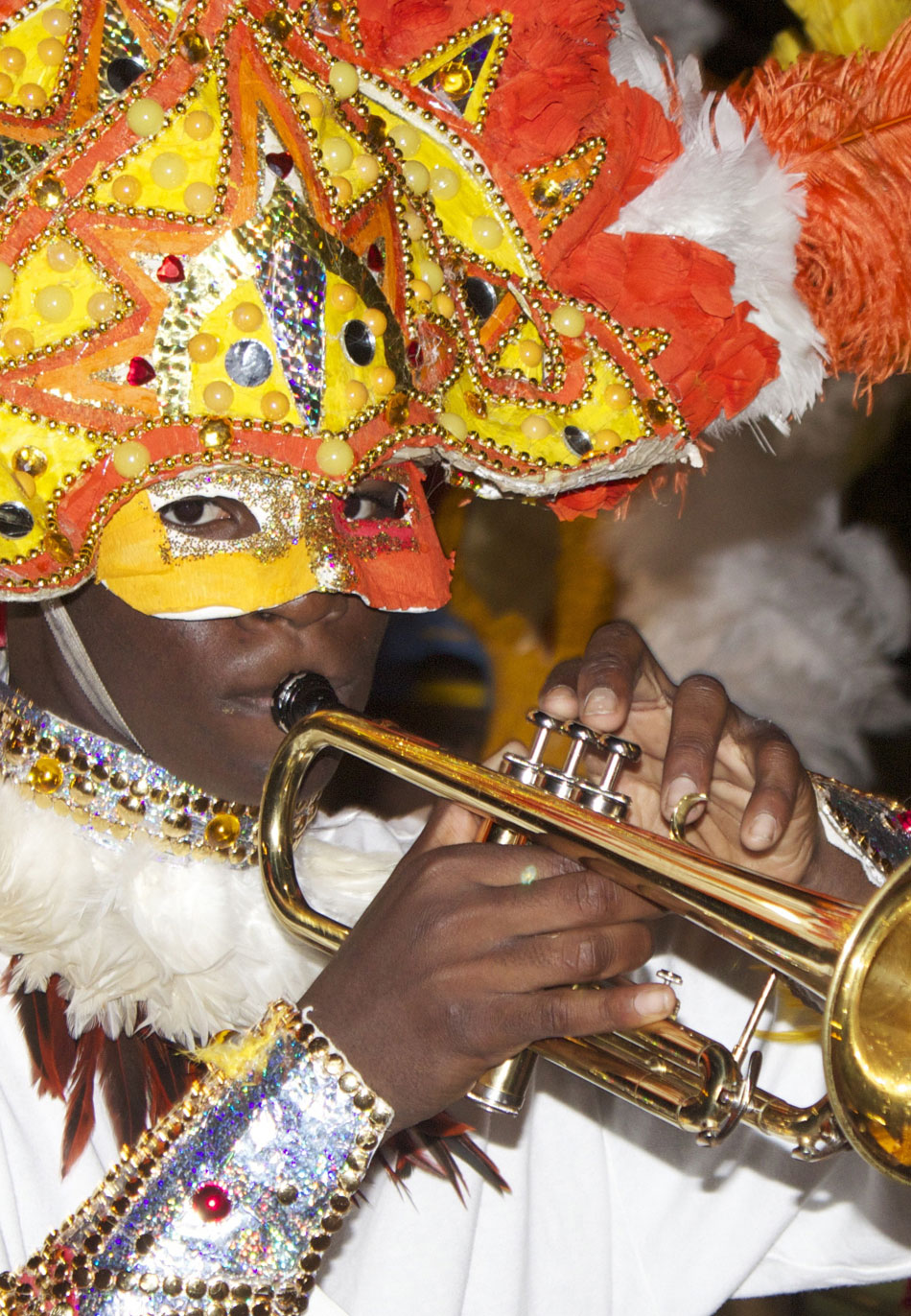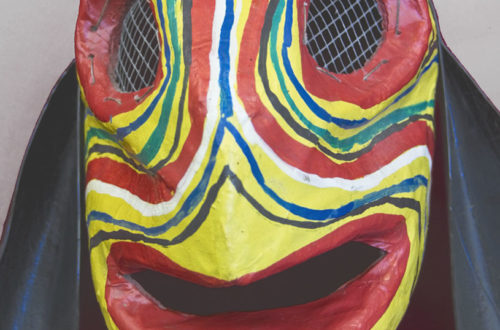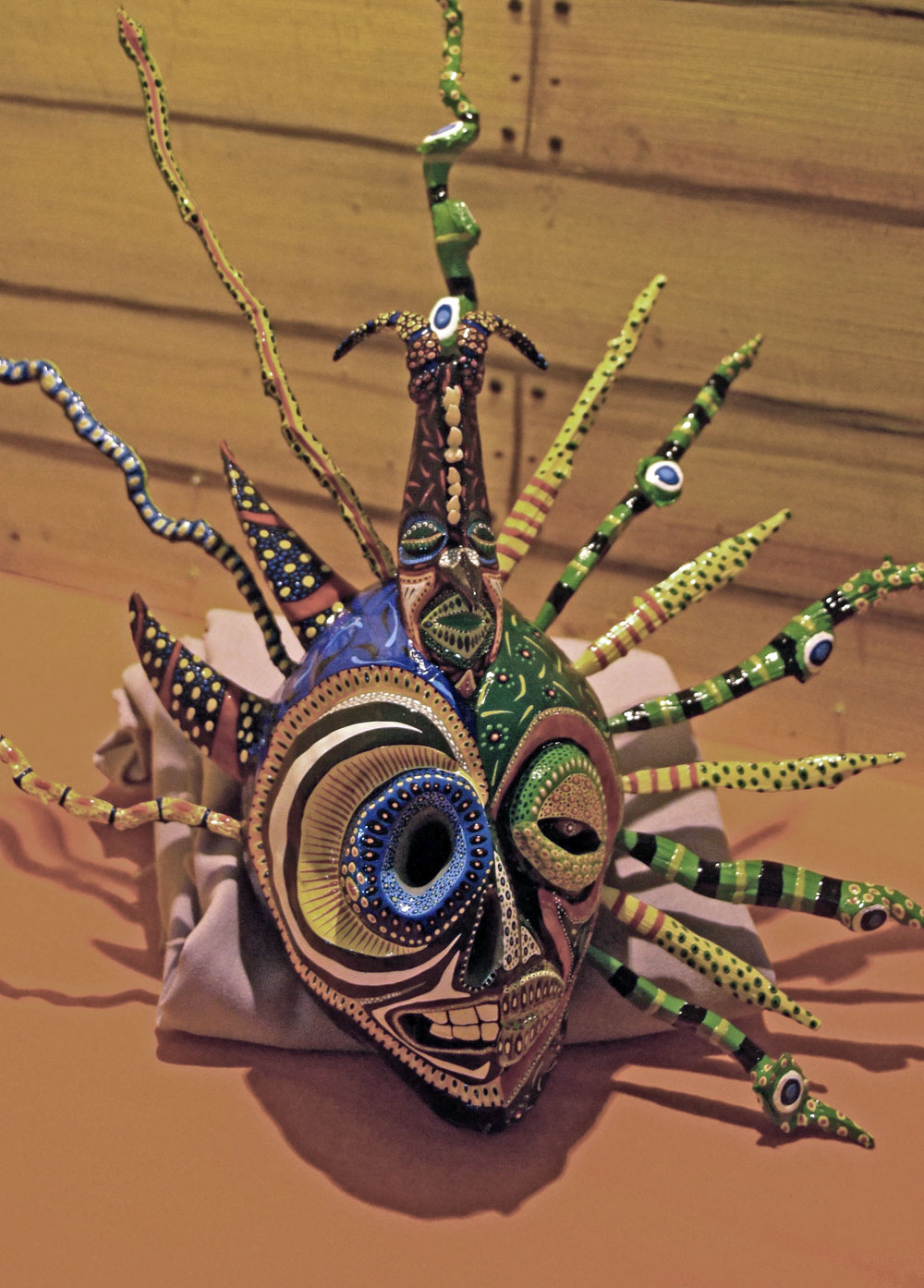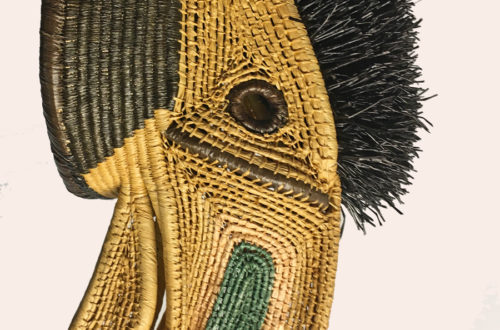Q: I believe this mask I have is merely decorative in value. Some of the Mexican masks that were collected at the same time as this one have references to a book written by Donald Cordry. I have 9 of them, 8 of which are double-headed. Eric, 1411 A: Cordry is famous to Mexican mask collectors. He wrote an important book, Mexican Masks– published in 1980. It was read by thousands all over the world, and for a few years was the bible for students and collectors. When he died at his vacation home in Guerrero, his collection was given to an art museum in the Southwest. Later we find…
-
-
Repainted Guatemalan mask
Q: Attached is an unusual Guatemalan mask of a Cristiano from the dance of the Moors and Christians in Coban, Alta Verapaz. It looks quite similar to the yellow one posted on your site some years ago (7.4.2015), except the color is different. Jean, 1410 A: Please go to the Guatemalan category so you can see the yellow mask Jean is referring to. Both masks are similar. Jean’s mask is a better carving. When you look at the rear you know that it is old, used, and more recently painted red over the original yellow so it can be used as a Moor in the dance. Morrerias (rental shops) will…
-
Mexican mask collection
Here is a medium-sized collection of masks from all over Mexico. There are 94 of them representing 15 states out of 31. Most are carved wood, and some are papier mache, leather, metal and fired clay. Few of them have much age. Old masks are rare, because rough usage and climate take their toll. Only one is not painted, which means it was made strictly for tourists. You won’t see collections like this in museums. It includes authentic (used in culture), plus new ones that could be used and decoratives for tourists and export. Curators and serious collectors don’t like to see this a mix like this. I disagree. Many…
-
Yao shaman’s mask
There’s a Yao mask in our archives, but this one is old, used and a bit more interesting. It would have been used by a priest or shaman to frighten away evil spirits. The Yao are a large indigenous culture that is in the mountains of southern China, Laos and Vietnam. They are one of the larger ethnic minorities in the area. 1408
-
Pentul the clown, Java
Q: The masks were found at an antiques mall in Alabama by a friend who was visiting the area and who knew I collect such things. He sent the photos and I told him to get both of them. Cost was $35 apiece; the vendors knew nothing about them. I’ll shoot them tomorrow with my camera and send proper shots…those that I sent were from his phone. I am not a collector per se, but I lived and worked in Guatemala and Mexico years ago and acquired masks as part of my broader interest in folk art. I have worked in the Amazon Basin for the past 26 years and…
-
Guere mask from Liberia
A dance mask with a mouth that moves from the Guere people of Liberia. Along with the Wobe and Sapo, and the We who live across the border in Ivory Coast, their carved art is similar. Wood with natural pigments, paint, horse hair, rope, leather, feathers, metal studs and other materials are often used in various combinations to make for a frightening appearance. As you can see, reticulating jaws are not uncommon. If it is not authentic, it is a very good reproduction.
-
Cululuk, a witch from Bali
Q: My parents bought this mask in Bali in 1968 or so, they told me it was Hanuman, but I don’t think so. Can you recognize the character? Initially he had long black hair. You can see it had real animal hide and we used to hang it by the string on its forehead. Heather, 1405 A: Cululuk is one of several witches in Calonarang, a very popular dance drama still performed on the island nation of Bali, Indonesia. Your piece is slightly above average in craftsmanship. It is in new condition– so it could be used by a dance company from a small town or sold to tourists. It…
-
Unusual mask from the DRC
I picked it out (on Pinterest) because I was so impressed by its design and beauty, however there was no description. Many different Kuba masks have strange horns, eyes, mouths, sculpted eyebrows, or intense decoration like this one, but never in this combination. Pende, Luba, and other tribes of the Democratic Republic of Congo are also capable of surprising creativity. Please comment on this African mystery mask.
-
Vuvi mask from northern Gabon
This beautiful mask is called a Moghondzi and used mostly at funeral ceremonies. It appears to be authentic and has developed a nice patina over the years. Don’t expect to find something like this in a thrift shop. Interesting fact: the Bwiti people, who live across the border in southern Cameroon, use masks that closely resemble the photo you see. It’s an example of how design ideas are sometimes influenced by nearby cultures. There are so many different tribes in Africa that we see a lot of similarities between them.
-
Junkanoo mask from the Bahamas
This Junkanoo celebration is a distinctly Bahamian combination of colorful handmade masks, costumes, cow bells, horns, and rhythmic goat-skin drums pounding out a steady island beat. We have in our Caribbean Category a photo from Jamaica showing a different approach to Junkanoo. Separated by Cuba and miles of sea water, you can see why they are different. Like so many masks and costumes from the region, they are influenced by African artistic traditions. That is a Bahamian boy marching in a young peoples band. A lot of time went into making that costume. Could you make something like that for your kid!
